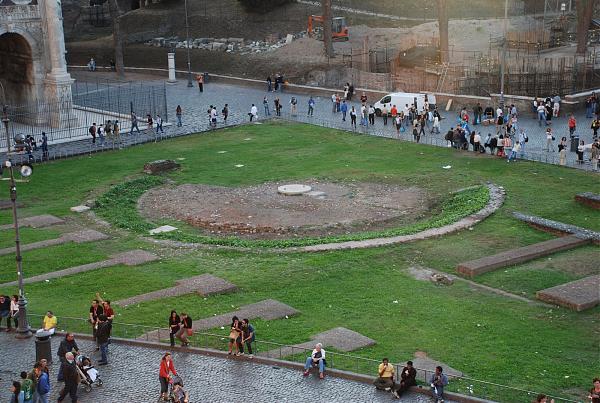
The visitor entered via an enormous vestibulum, a sort of colonnade where, at its centre, stood a statue of Nero as the sun god. The domus for public interactions was located on the Velia Hill, facing the other palace and in front of where the Coliseum is now. They extended in length rather than in breadth, with quite a bizarre appearance. These two buildings did not resemble the usual imperial residences, which were usually broad and welcoming, but rather more like those villas dedicated to rest and relaxation, such as were located on the Lazio and Campania coasts.

This new palace was a major construction, a realm divided into two distinct residences, one for private and one for public use, set amidst marvellous woods, sweet meadows and productive vineyards. The event allowed the emperor to dispossess the Velia, Oppian and Celio Hill and build his dream house, the Domus Aurea. The fire was frightful and immense, devastating seven regiones (districts) of the city of Rome and seriously damaging another three. It is suggested that it was to this purpose that he planned the great fire of AD 64, for which he blamed the Christians. The realisation of his idea required him to make some harsh decisions, including razing everything in the area to the ground. His dream was to build an even bigger, grander palace, whose memory would last even after his death. However, as grand as his plan was, this was still only a temporary solution for him. Nero decided to build a domus transitoria right in the valley between the two hills, a temporary palace that connected them, redesigning the lake itself and including it in his new, extremely luxurious villa. The surrounding neighbourhood of these hills had a reputation as among the worst in Rome. A small artificial lake nestled in the small valley between the two hills, where, half a century later, the Colosseum would be built. When Nero became emperor, the Palatine Hills hosted the homes of his predecessors Emperor Tiberius and Emperor Augustus, with the latter also building his horti (garden) on the nearby Esquiline Hill. And thanks to his stubbornness and ruthlessness, he got exactly what he wanted. One among his many obsessions was to have a palace commensurate with his rank, surpassing in its beauty, splendour and ostentation all others built in Rome to that time. Nero was the last aristocrat to become princeps of the Roman Empire, back in AD 54, and he was definitely the most eclectic, creative and, as some may say, craziest among the Roman emperors (see Suetonius, Vita Neronis, 69: “ Qualis artifex pereo,” which translates in English to, “What an artist dies in me” said by Nero before dying in AD 68).

The story of Emperor Nero and his Domus Aurea (Latin for Golden House) is one of most fascinating of ancient times.


 0 kommentar(er)
0 kommentar(er)
